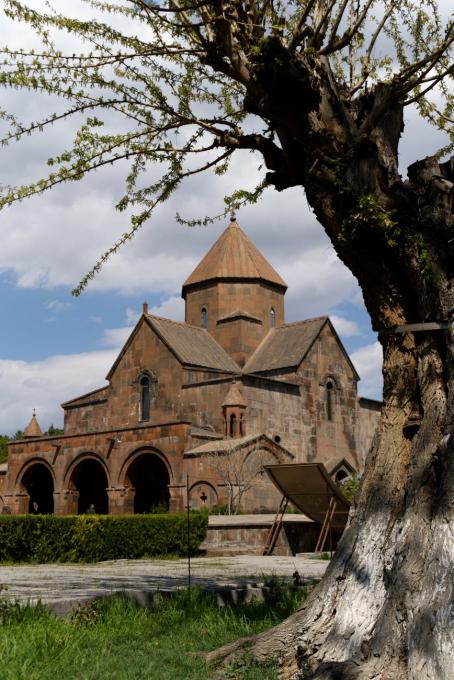
Looking like a mini-Parthenon, the Temple at Garni is the only Graeco-Roman type structure in the whole of Armenia. The temple is on a triangle of land thrusting out above the Azat River. This is a naturally defensible position above a spectacular gorge where I saw basalt columns, similar to the Giant’s Causeway in Northern Ireland. Indeed, walking along the gorge is a great way to start a visit to the temple, as the spectacular columns are quite a sight as they occupy the entire side of the gorge in places.
The oddest thing about the temple is that the precise date of construction is unknown and the subject of debate. The dominant view is that Garni Temple was built in 77 AD, during the reign of king Tiridates I. In 1945, the Armenian painter Martiros Saryan discovered an inscription naming Tiridates I as founder of the temple. Tiridates I visited Rome in 66 AD and the Emperor Nero crowned him. Nero gave Tiridates I 50 million drachmas and provided him with Roman artisans to rebuild the city of Artaxata after the Roman general Corbulo destroyed it. This reconstruction included the rebuilding of the fortified city of Garni and the construction of the temple, which was dedicated to Mihir, the sun god in the Zoroastrian-influenced Armenian myths.
It would make perfect sense to me to have Roman artisans build a Roman-style temple. The correct materials would be required. The right proportions would need to be engineered. Also, the building would require a skilled architect who’d appreciate where the weight-bearing load would be placed. There’s also the minor matter of lifting heavy basalt blocks around twenty feet off the ground.
A different theory suggests the erection of the temple started in 115 AD when Armenia became a Roman province. The temple would have housed an imperial effigy of the Emperor Trajan. A newer alternative theory suggests that the building is a tomb, probably constructed circa 175 AD. This theory is based on a comparison to Graeco-Roman buildings of western Asia Minor and the argument that a pagan temple would be unlikely to survive destruction during Armenia’s conversion to Christianity when all other such temples were destroyed. If Garni Temple is in fact Garni Tomb, then it is most likely the tomb of an Armeno-Roman ruler such as Sohaemus.
